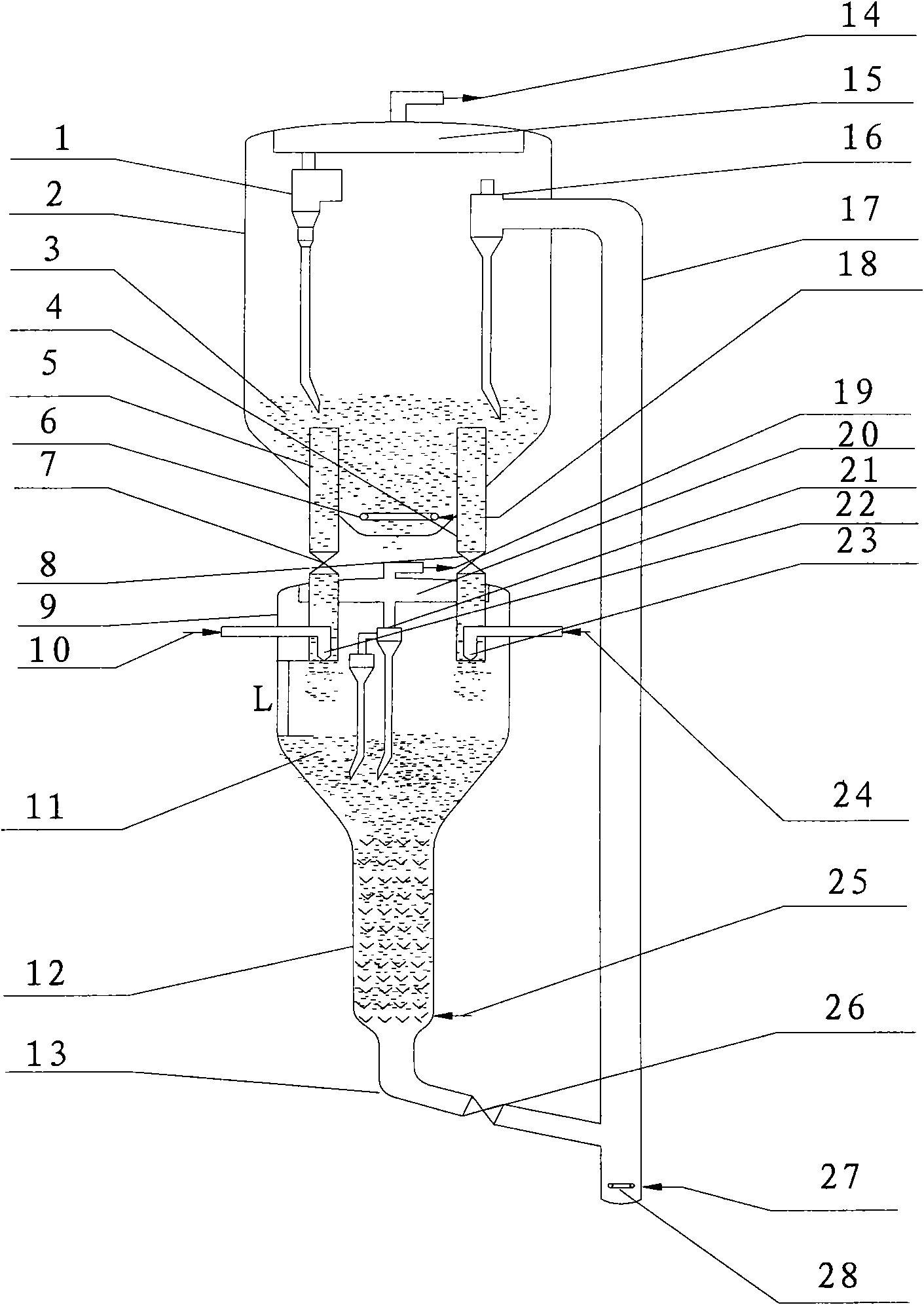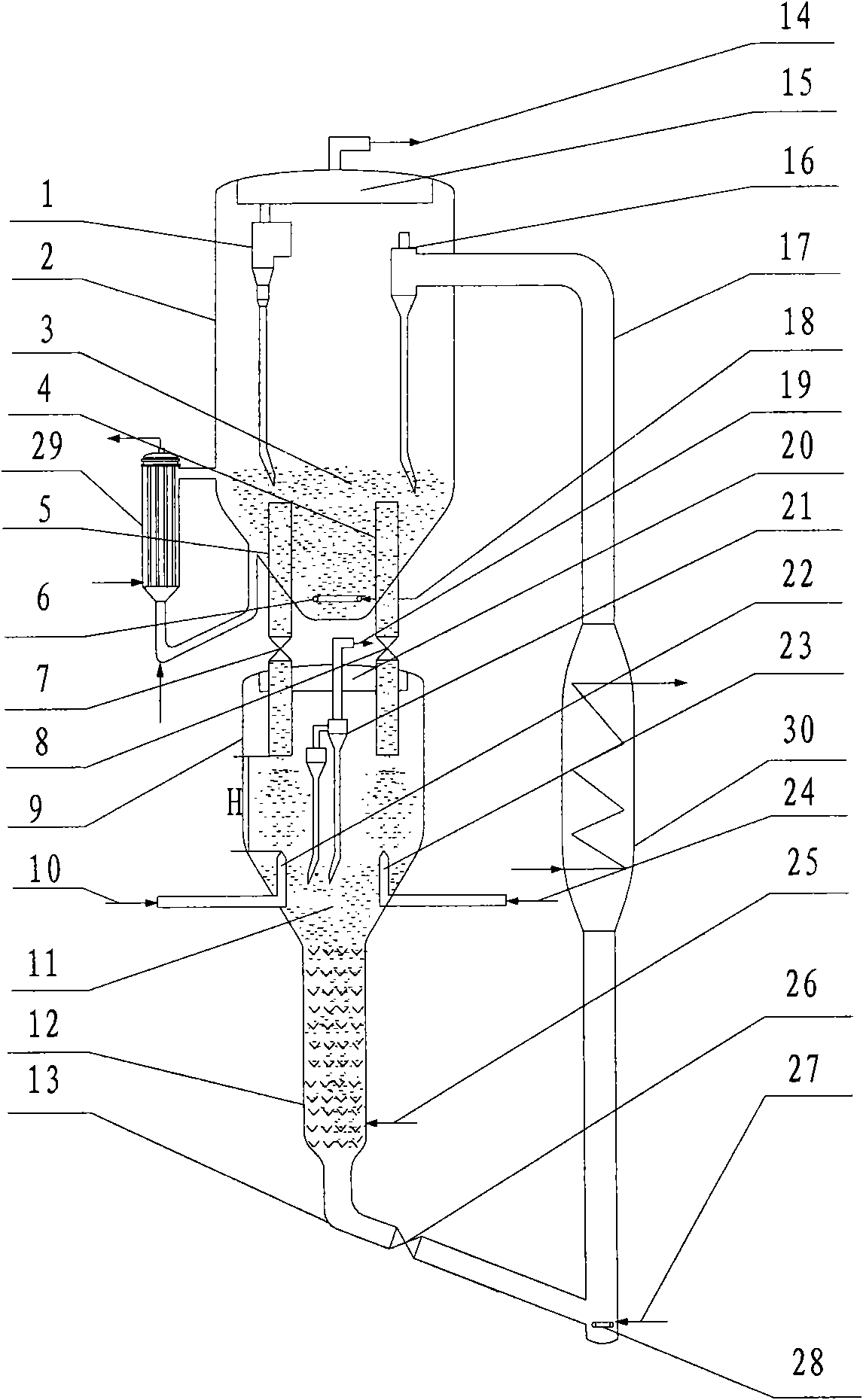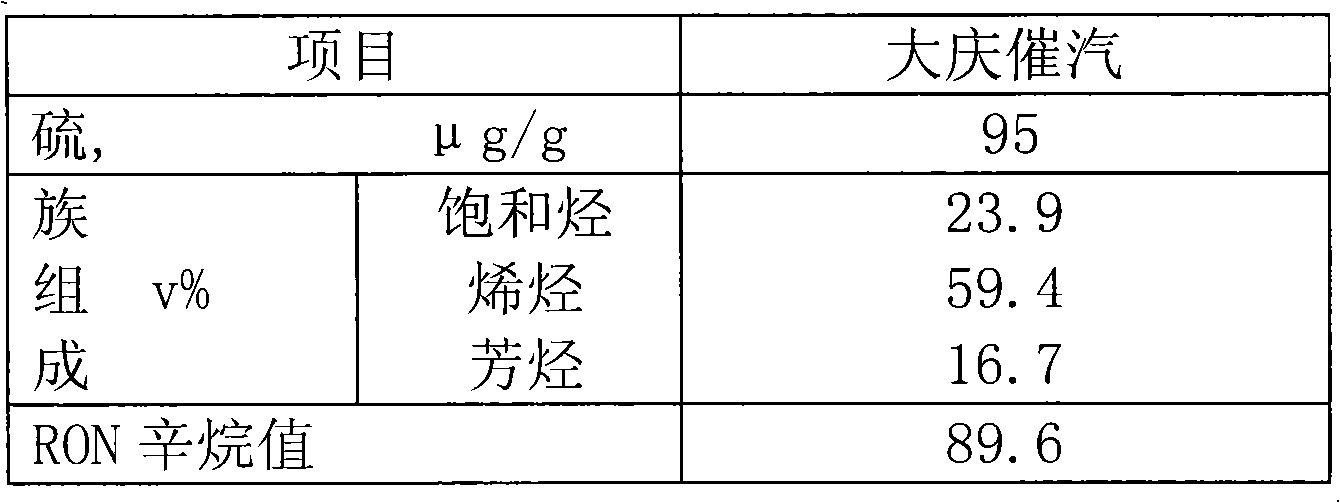Catalytic cracking technology and device for reducing olefins in gasoline
A catalytic cracking device and catalytic cracking technology, applied in catalytic cracking, cracking, petroleum industry, etc., can solve the problems of inflexible control of catalyst temperature, low catalyst-to-oil ratio, and low coking capacity of the device
- Summary
- Abstract
- Description
- Claims
- Application Information
AI Technical Summary
Problems solved by technology
Method used
Image
Examples
Embodiment 3
[0073] The raw material used in the test was atmospheric residual oil from Daqing, and the catalyst was commercially available CC-20 catalytic cracking industrial equilibrium catalyst with a microreactive activity of 65.
[0074] A catalytic cracking process test for reducing gasoline olefins in the present invention is carried out on a small-scale fluidized bed device in a laboratory. The raw catalyst is burnt in a tubular manner and then enters a regenerator with a micro-reaction activity of 65. The stripping medium in the stripping section of the reaction settler is water vapor, and the stripping temperature is 500°C. The catalytic cracking unit in this example adopts full back refining operation, and the operating conditions, product distribution and properties of some products are shown in Table 5.
Embodiment 4
[0076] According to embodiment 1, the difference is the temperature of the regenerated catalyst from the regenerator, the reaction temperature of the raw material in the reaction settler, the ratio of agent to oil, and the reaction time. The operating conditions, product distribution and some product properties of the catalytic cracking unit in this embodiment are shown in Table 6.
Embodiment 5
[0078] According to Example 1, the difference is the temperature of the regenerated catalyst from the regenerator, the ratio of feedstock to oil in the reaction settler, and the reaction time. The operating conditions, product distribution and some product properties of the catalytic cracking unit in this embodiment are shown in Table 7.
PUM
 Login to View More
Login to View More Abstract
Description
Claims
Application Information
 Login to View More
Login to View More - Generate Ideas
- Intellectual Property
- Life Sciences
- Materials
- Tech Scout
- Unparalleled Data Quality
- Higher Quality Content
- 60% Fewer Hallucinations
Browse by: Latest US Patents, China's latest patents, Technical Efficacy Thesaurus, Application Domain, Technology Topic, Popular Technical Reports.
© 2025 PatSnap. All rights reserved.Legal|Privacy policy|Modern Slavery Act Transparency Statement|Sitemap|About US| Contact US: help@patsnap.com



